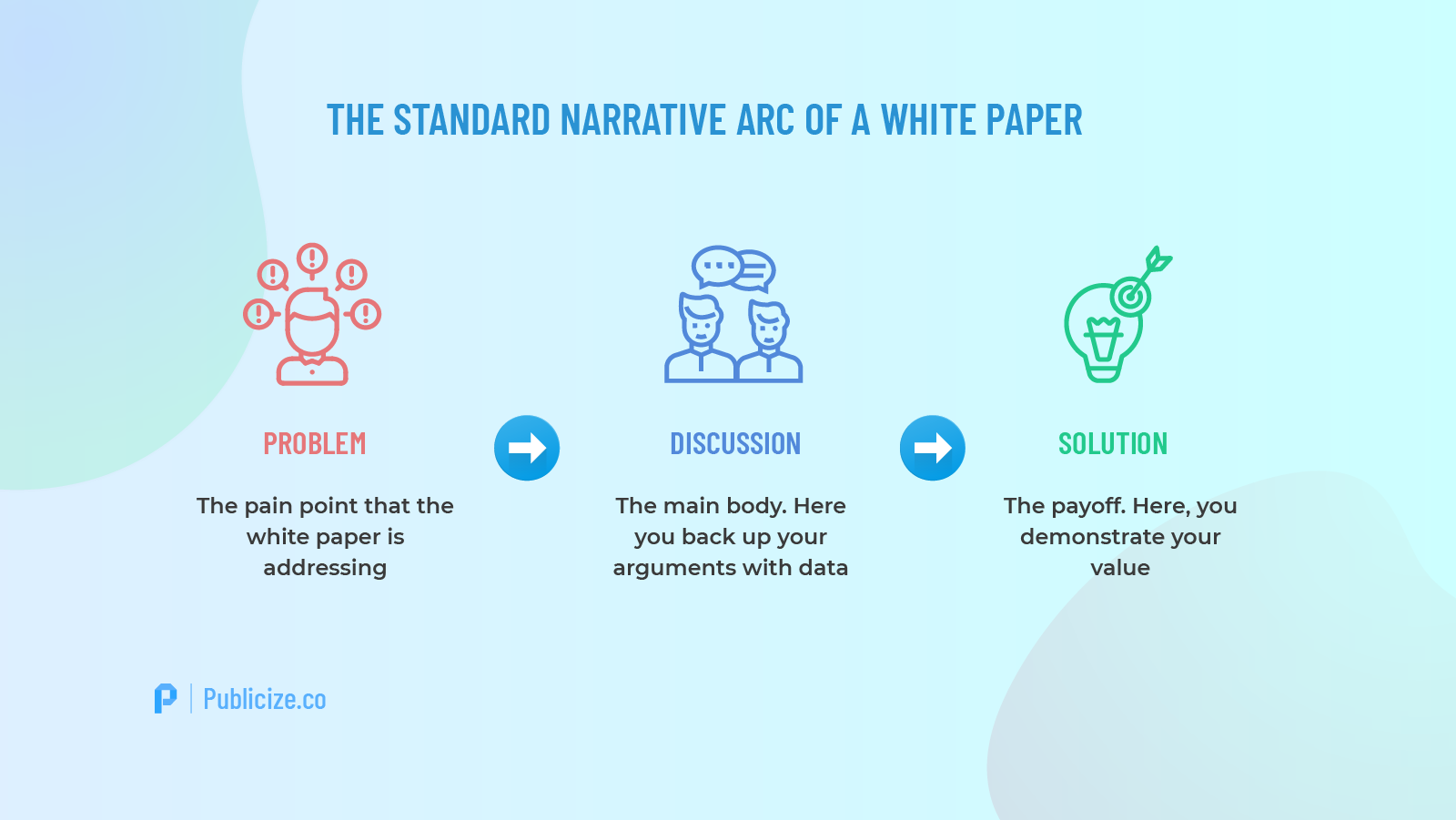So, your content marketing strategy is well underway. Your website is home to a hefty stream of educational blogs full of expert insights, and your social media marketing is full of articles screaming “thought leadership.”
Now you’re looking for a way to use your experience and expertise to go deeper into a subject, with a piece of lead generation content that provides value to your target audience. And with 93% of B2B companies stating that content marketing generates more leads than traditional methods, there’s no doubt that these “fat” and value-ridden pieces of content have a place in your strategy.
It seems there are two options in front of you: white paper vs ebook.
What are white papers and ebooks?
A white paper is an age-old example of a document that paints you as a legitimate and credible thinker in your space. But on the other hand, an ebook is a more modern phenomenon that allows you to educate customers in a more accessible way.
And while these lines are often blurred, it’s important to understand the difference between an ebook vs a white paper. So in this blog post I’ll discuss the key differences between the two, so you can decide which is the best for your needs.
What’s your objective?
The most important aspect to consider when evaluating white papers vs ebooks, is what exactly is your objective (beyond simply creating a piece of lead generation content!).
Are you looking to explore a complex problem in-depth, and then offer a solution? If so, a white paper is probably best.
How to use white papers for marketing
White papers are generally seen as more academic and data-focused compared to ebooks, and often follow the structure of Problem > Discussion > Solution (as the below infographic shows). And they’re usually written in the style of a report or case study, with an authoritative and objective tone.

Moreover, white papers often educate readers on a specific problem that they might not have even been aware of, helping to subtly build your sales argument as you position yourself as part of the solution.
Ultimately, the purpose of the white paper is to act as a keystone document that showcases your in-depth expertise of a certain subject and act as a dossier of your company’s values. It provides a great opportunity to foster thought leadership and increase brand and consumer trust.
How to use ebooks for marketing
Ebooks, on the other hand, are less explicitly about your company and your products. They provide “how to guides”, industry insights or other content that helps to educate or inform your target audience. Of course, the subject of an ebook has to tie into the product you provide. For example, our PR for Growth Playbook provides a step by step guide on how to do PR, which as a PR company we’re in position to educate people about.
Who’s your audience?
Defining your objective goes hand-in-hand with identifying your target audience. Customers going through different stages of the sales journey are going to be interested in different types of content.
Ebook target audience
For example, a customer who’s at the top of the sales funnel would probably prefer an easy-to-digest ebook that’s written in a more informal tone, if they aren’t yet overly familiar with your industry. At this point, you might have only recently entered their radar and they’re still at the “awareness” stage. In fact, Hubspot writer Emily Haahr argues that ebooks are the winner altogether, thanks to their casual tone and wider appeal, enabling them to be able to “spread like wildfire.”
A great example of an ebook that provides value and serves as a successful lead generation content is Hubspot’s ‘how to create an ebook for lead generation’. It educates its audience on how to achieve their goal while demonstrating Hubspot’s expertise.
White paper target audience
So, writing an ebook can be a great way to use content marketing to generate new leads and increase awareness. However, if a customer is at the later stages of the sales funnel and looking for evidence that you’re as credible as you say you are, a white paper is a better demonstration of that. At this point, the customer is at the decision-making stage and is looking for “proven validation.”
Thanks to the rigorous research and expert insights that good white papers are usually bursting with, they can be a great tool to fuel a buying decision. In fact, according to the Eccolo Media B2B Technology Content Survey, more than half of respondents said they read a white paper before making a buying decision.
This gives a clear answer for those who are still wondering if white papers are still relevant. A well-written white paper can be the deciding factor on closing the sale, especially for B2B companies.
But what makes a good white paper?
For example, tech conglomerate Cisco Systems are well versed in writing successful white papers, finessing technically challenging topics into a digestible and accessible narrative.
To learn how to write effective white papers, see our free resource below.
How to write white papers and ebooks
Although the format of an ebook and a white paper is quite similar, there are few characteristics that differentiate these two lucrative pieces of content.
Research
When it comes to researching and writing a white paper, you’ll need plenty of internal and external data. This is in addition to interviews with experts at your company and/or in your industry to make a comprehensive document that is almost academic in nature. For an ebook, you should find good statistics (internal and external) to use to support your case – which is much less time intensive.
Design
And with regards to design, modern white papers need to look sleek and offer plenty of graphics, charts, pull-out quotes and more to make the content more easily digestible. And try to avoid stock images! This is compared to ebooks, which while also usually professionally designed, are often finished to a slightly lower design standard.
Length
When it comes to the length of an ebook vs a white paper, there’s no set rule. In theory, ebooks should be easier to peruse and digest, so it helps when they aren’t edging actual book length. The truth is, both documents can range from anything from 5 to 25 pages. So as long as you’re not writing to fill an arbitrary word count and all content is needed and relevant, don’t worry too much about how many pages your white paper or ebook should be.
Distribution
If you want to create a piece of content that’s designed to generate leads, one of the more savvy solutions is to ‘gate’ this content behind a form that can be filled out on a landing page.
It’s important to remember, however, that white papers often serve as a proof of expertise at the bottom of some marketing funnels. As such, many B2B whitepapers are better served as open resources on certain B2B companies’ websites. Like everything else, the best tactics for distribution depend on your objectives.
Final Thoughts
It should now be a lot clearer now what the main differences between ebooks and whitepapers are and how they serve a different purpose. Knowing the difference between ebook vs white paper and identifying which stages they fit in the customer journey is an important factor in a successful content marketing strategy.
So consider whether your next big content marketing idea needs to be presented as an authoritative, academic white paper, or an informative yet casual ebook.
One thing is for certain though, both methods are an awesome way to add to your image as a credible brand with expertise to share, thus generating leads and pushing customers along their buying journey.







